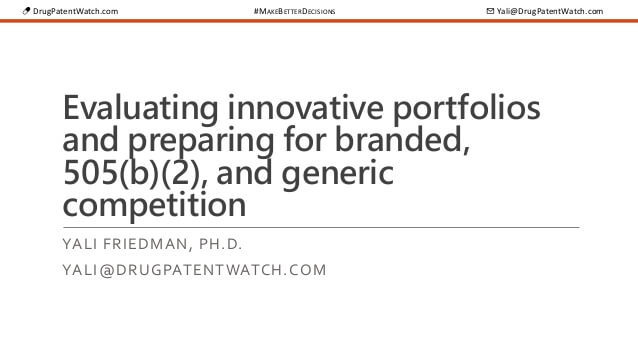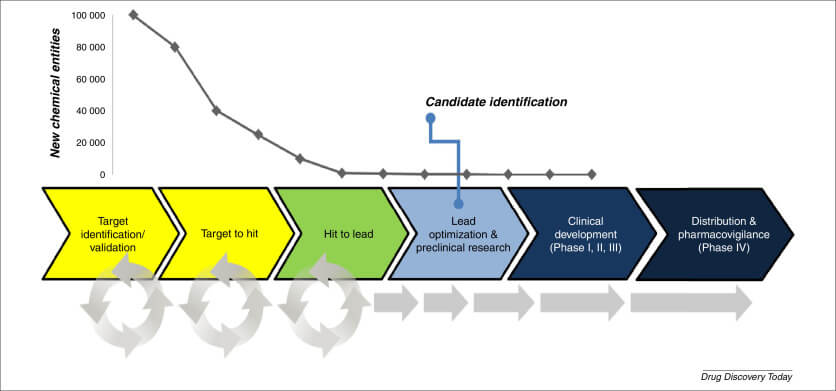The pharmaceutical industry stands at a critical crossroads where innovative pricing strategies are becoming essential to balance drug accessibility with sustainable business models. Among these emerging approaches, the “Netflix model” for drug pricing has gained significant traction as a promising solution to expand treatment access while providing budget predictability for healthcare payers. This subscription-based pricing framework, where payers provide a fixed upfront payment for unlimited access to specific medications over a defined period, has shown remarkable success in early implementations for hepatitis C treatments in states like Louisiana and Washington. By decoupling payment from volume, this model creates a win-win-win scenario: patients gain broader access to life-saving treatments, healthcare systems achieve budget certainty and reduced long-term costs, and pharmaceutical companies secure reliable revenue streams. As healthcare systems worldwide grapple with rising drug costs and limited resources, subscription models represent a paradigm shift in how we finance and distribute essential medications, potentially transforming the landscape of pharmaceutical access and affordability.
Understanding the Drug Pricing Crisis
The pharmaceutical industry’s pricing practices have increasingly become a focal point of public concern and policy debate. Between 2015 and 2017, total hospital and health system spending on drugs increased on average by 18.5 percent per admission, including a significant jump of 28.7 percent per outpatient adjusted admission5. This followed a record 38.7% increase in prescription drug spending in the inpatient setting from 2013 to 20155. These escalating costs create substantial financial burdens across the healthcare ecosystem, affecting patients, providers, and payers alike. Many patients find themselves unable to afford their prescribed medications, leading to poor adherence, worsening health outcomes, and ultimately, higher healthcare utilization in emergency settings.
Healthcare providers face difficult decisions when drug prices rise unexpectedly. According to the American Hospital Association, continued price hikes by manufacturers are forcing hospitals to make significant operational changes such as downsizing staff, delaying capital investments, and employing alternative therapies, all in an effort to cope with the high cost of drugs5. These compromises can ultimately affect the quality and breadth of care that institutions can provide to their communities. The traditional volume-based payment model, where payers reimburse for each prescription filled, has failed to control costs effectively while simultaneously creating access barriers for patients who need treatments most.
The Access Paradox in Current Pricing Models
The current predominant pricing model creates what can be characterized as an access paradox. Despite breakthrough treatments being developed for once-untreatable conditions, many patients who could benefit remain unable to access these therapies due to prohibitive costs. Hepatitis C provides a striking example of this disconnect between innovation and access. Prior to implementing new pricing approaches, Louisiana had approximately 39,000 Medicaid beneficiaries and prison inmates with Hepatitis C, yet was only able to treat around 1,000 patients in a year due to budget constraints1. This situation, replicated across various states and health systems, demonstrates how traditional pricing models can severely restrict the public health impact of medical innovations.
The volume-based payment approach creates inherent conflicts between controlling costs and maximizing treatment access. Payers must often implement strict criteria for treatment approval, limiting therapy to the sickest patients rather than providing early intervention that could prevent disease progression and complications. This approach is not only potentially harmful to patients but also economically counterproductive, as it often means paying for more expensive complications later. The fundamental misalignment between the goals of maximizing population health and controlling immediate budget impacts calls for innovative solutions that can bridge this divide.
The Limitations of Traditional Value-Based Pricing
Value-based pricing has emerged as a preferred alternative to prices determined by what the market will bear or other approaches such as price referencing3. However, even this more progressive approach has significant limitations. Health authorities use value-based pricing models to determine the value of innovative drugs and to establish a price, while pharmaceutical companies generally prefer value-based pricing over cost-based pricing approaches3. Despite this apparent alignment, the emphasis placed on different value elements often differs significantly between stakeholders.
Value-based pricing for pharmaceuticals lacks standardization across markets and therapeutic areas. According to multiple experts, it is “more of an art than science due to lack of standardization of value-based pricing practice”3. Furthermore, some argue that traditional value-based approaches may not be appropriate for certain categories of innovative drugs such as orphan drugs or gene and cell therapies, which present unique challenges in terms of both pricing and assessment frameworks3. These limitations highlight the need for more flexible, innovative pricing models that can address the complexities of modern pharmaceutical markets while improving access to essential treatments.
The Netflix Model: A Subscription Approach to Drug Pricing
The Netflix model for pharmaceutical pricing represents a fundamental shift in how medications are financed and distributed. Under this approach, instead of paying for each individual prescription, a payer (typically a government health program) pays a flat subscription fee to a pharmaceutical company in exchange for unlimited access to specific drugs over a period of several years1. This model derives its name from the popular streaming service that offers unlimited content access for a fixed monthly fee, applying similar principles to medication access. The payment structure completely transforms the economics of drug utilization, making the marginal cost of treating each additional patient effectively zero once the subscription fee is paid.
This innovative payment approach is also referred to as a Payer License Agreement (PLA) in some contexts. According to research published in 2022, the model is built on three key structural changes to traditional pharmaceutical economics: “(1) the pricing basis, that is, the indivisible product or service that is sold, is the full population served by the payer, as opposed to the individual patient or treatment; (2) the value of the drug, and thus the price, is linked directly to the incremental cost avoidance; and (3) the payment is annuitized and contracted as a subscription over a period of 5 or more years”6. These principles fundamentally change the relationship between volume, cost, and access in ways that can benefit all stakeholders when properly implemented.
Origins and Early Implementations
The Netflix model for pharmaceuticals has relatively recent origins as an implemented strategy, though subscription-based approaches have been discussed conceptually for longer. According to available information, Australia became the first country to implement a drug subscription model at scale in 20157. The Australian federal government negotiated an unlimited supply of hepatitis C medicines for a recurring licensing fee, providing universal access to treatment at no cost to patients7. This pioneering implementation demonstrated the potential for subscription models to dramatically improve treatment access while creating budget predictability for national health systems.
In the United States, Louisiana became a trailblazer by adopting the Netflix model specifically to address the hepatitis C treatment challenge. With an aim to lower drug spending and increase access to HCV drugs, Louisiana implemented this innovative payment approach with the goal of treating 10,000 Medicaid beneficiaries and prison inmates with hepatitis C by 2020, a tenfold increase over their previous treatment rates1. The state capped spending for the model at $35 million, which was the amount Louisiana spent treating hepatitis C patients in 20181. After receiving proposals from multiple pharmaceutical manufacturers, Louisiana ultimately selected Asegua Therapeutics (a Gilead subsidiary) as its partner in March 2019, securing unlimited access to the generic form of Epclusa (sofosbuvir, velpatasvir) through a five-year contract1.
How Subscription Models Work in Practice
The practical implementation of subscription models requires careful planning and negotiation between payers and pharmaceutical companies. The defining feature of a subscription model is “a negotiated fixed amount paid by a payer to a manufacturer in exchange for access to one or more specific drugs for a specific patient population and use over a predefined period”2. The negotiated amount typically takes into account the expected number of patients to be treated, the alternative cost if treating these patients through traditional payment methods, and the value of budget predictability to the payer.
Additional features can be incorporated into variants of the subscription model to adjust the negotiated payment based on prespecified contingencies. These might include “nonlinear pricing (i.e., pricing tied to the volume used), outcomes-based adjustments, and other provisions that layer additional sophistication and strategy on top of the basic per-unit payment approach”2. These modifications allow the model to be adapted to different therapeutic contexts and stakeholder priorities. Importantly, the subscription model effectively creates a closed formulary situation where the contracted product becomes the preferred treatment for all indicated patients, except those with specific medical needs requiring alternative treatments2.
Case Studies of Subscription Model Implementation
The implementation of subscription-based pricing models provides valuable real-world evidence of their potential impact. Each case offers unique insights into the challenges and benefits of this innovative approach to pharmaceutical pricing and access.
Louisiana’s Groundbreaking Hepatitis C Initiative
Louisiana’s implementation of the Netflix model for hepatitis C treatment represents one of the most closely watched experiments in pharmaceutical pricing innovation. Prior to implementing the subscription model, Louisiana faced a significant public health challenge with approximately 39,000 Medicaid beneficiaries and prison inmates infected with hepatitis C, yet budget constraints limited treatment to only about 1,000 patients annually1. This treatment gap prompted state officials to seek creative solutions that could dramatically expand access without overwhelming the state’s healthcare budget.
The Louisiana Department of Health received proposals from three pharmaceutical companies—AbbVie, Asegua Therapeutics (a Gilead subsidiary), and Merck—for its new payment model, and ultimately selected Asegua as its partner in March 20191. The five-year contract began on July 1, 2019, providing Louisiana with unlimited access to the generic form of Epclusa (sofosbuvir, velpatasvir), a highly effective hepatitis C treatment1. The state capped spending for the model at $35 million, which was the amount Louisiana spent treating hepatitis C patients in 20181. This approach allowed Louisiana to maintain budget neutrality while dramatically expanding treatment access, with the goal of treating 10,000 patients by 2020—a tenfold increase over previous capacity1.
Washington State’s Path to Hepatitis C Elimination
Washington state adopted a similar subscription model to Louisiana but with some important distinctions in its implementation and goals. Washington took a more comprehensive approach through outreach, screening, and connecting hepatitis C-infected patients with appropriate care, all as part of an ambitious goal to completely eradicate hepatitis C in the state by 20301. This holistic strategy recognized that pricing models alone are insufficient to address public health challenges without corresponding initiatives to identify patients and connect them with available treatments.
Washington’s purchasing model, while similar in concept to Louisiana’s, had some structural differences. The state’s approach to the subscription model was designed to complement its broader public health strategy for hepatitis C elimination1. By combining innovative pricing with robust public health initiatives, Washington created a framework that addressed both the economic and practical barriers to widespread treatment. This comprehensive approach highlights how subscription models can be integrated into broader public health strategies to maximize their impact on population health outcomes.
UK’s Innovative Approach to Antibiotic Development
The United Kingdom has pioneered the application of subscription models in a different therapeutic area—antibiotics. As part of the UK Department of Health and Social Care (DHSC)’s five-year antimicrobial resistance (AMR) action plan, the National Health Service (NHS) launched a trial of a new subscription payment model specifically designed to incentivize pharmaceutical companies to develop new antibiotics against resistant bacteria4. This initiative addresses a critical market failure in antibiotic development, where traditional volume-based payment models have failed to generate sufficient returns on investment for pharmaceutical companies.
The current volume-based payment model for antibiotics, combined with appropriate stewardship practices that limit their use to prevent resistance, means that “little or no return on investment is available for pharma companies in the standard reimbursement model”4. This economic reality has led major pharmaceutical companies to reduce or abandon antibiotic research and development—for example, Novartis announced it was reducing its antibiotics R&D capabilities in late 20184. The NHS subscription model aims to decouple payment from volume, providing pharmaceutical companies with predictable returns on antibiotic investments regardless of utilization levels. This approach recognizes the public health value of having effective antibiotics available when needed, even if their ideal use pattern involves minimal actual prescription.
Benefits of the Subscription Model for Stakeholders
The subscription model for drug pricing offers distinct advantages for various stakeholders in the healthcare ecosystem. Understanding these benefits helps explain why this innovative approach has gained traction across different healthcare systems and therapeutic areas.
Advantages for Patients and Public Health
For patients, the most immediate benefit of subscription models is dramatically improved access to essential medications. By removing the per-treatment cost barrier, these models enable healthcare systems to treat all eligible patients rather than rationing care based on budget constraints or disease severity. In the case of hepatitis C, this means patients can receive curative treatment earlier in their disease course, preventing progression to more serious complications like liver cirrhosis or cancer. The subscription approach fundamentally transforms the treatment paradigm from one of scarcity and prioritization to one of comprehensive coverage and public health optimization.
From a public health perspective, subscription models enable more aggressive and comprehensive approaches to disease management and elimination. The model has been described as achieving a “win-win-win solution to faster hepatitis C elimination with fewer deaths, lower total costs and reliable therapy revenues”6. By treating more patients earlier in their disease course, these models can reduce overall disease prevalence and transmission, potentially leading to dramatic population-level health improvements. For infectious diseases like hepatitis C, widespread early treatment can break transmission chains and contribute to disease elimination efforts, creating exponential public health benefits beyond the individual patients treated.
Benefits for Government and Private Payers
For payers, whether government health programs or private insurers, subscription models offer unprecedented budget predictability for high-cost medications. Under traditional pricing approaches, payers face significant uncertainty about future expenditures, particularly for conditions with variable or growing patient populations. The Netflix model transforms this uncertainty into a fixed, predictable expense that can be planned for in advance. According to analysis of the model, it “will benefit states by helping establish a fixed budget for expensive treatments and more control over Medicaid budgets”1. This predictability is particularly valuable for government programs with fixed annual budgets that must balance competing healthcare priorities.
Subscription models can also generate substantial cost savings when implemented effectively. By negotiating a fixed payment based on the value of treatment rather than per-prescription costs, payers may achieve significant discounts relative to traditional pricing approaches, particularly for high-volume treatments. In Louisiana’s case, the subscription model allowed the state to maintain its existing budget for hepatitis C treatment while dramatically expanding the number of patients treated1. Over the long term, treating patients earlier may also reduce future healthcare costs associated with disease progression and complications, creating additional economic benefits for healthcare systems beyond the immediate drug cost savings.
Value Proposition for Pharmaceutical Companies
While subscription models might initially appear disadvantageous to pharmaceutical companies by potentially reducing per-patient revenue, they offer several compelling benefits that have attracted industry participation. First, these models provide guaranteed, predictable revenue streams over extended periods, typically 3-5 years. This revenue certainty reduces market risk and can be particularly valuable for products facing competitive pressure or utilization challenges. The model effectively transforms pharmaceutical sales from a variable, uncertain revenue stream to a stable, subscription-based business model more similar to software services than traditional pharmaceutical sales.
Subscription models can also expand the total patient population receiving treatment, potentially allowing pharmaceutical companies to serve patients who would otherwise never receive their therapies due to cost barriers. For treatments where market penetration has plateaued under traditional pricing models, subscription approaches can unlock new market segments previously considered inaccessible. Additionally, these models may improve public perception of pharmaceutical companies by demonstrating their commitment to expanding treatment access while maintaining sustainable business practices. As one analysis notes, “manufacturers with high-priced drugs may use subscription models as a way to signal that their drugs are accessible to patients at a much lower than expected unit price”2.
Challenges and Limitations of Subscription Models
Despite their promise, subscription-based pricing models face several significant challenges and limitations that must be addressed for successful implementation. Understanding these barriers is crucial for developing strategies to overcome them and expand the model’s application across different therapeutic areas and healthcare systems.
Implementation Challenges Across Different Healthcare Systems
The implementation of subscription models requires specific conditions that may not exist in all healthcare systems. These models work best in relatively centralized systems where a single payer or coordinated group of payers can negotiate on behalf of a large patient population. In more fragmented healthcare systems, achieving the necessary scale and coordination to make subscription models attractive to pharmaceutical companies presents a significant challenge. The administrative complexity of managing these agreements, tracking utilization, and ensuring appropriate use of contracted medications also requires sophisticated systems and processes that may be lacking in some healthcare environments.
Subscription models also introduce risks related to volume uncertainty for both payers and manufacturers. As one analysis explains, “Both the payer and the manufacturer assume risks related to volume and effectively over- or underpay relative to what they likely would have paid under the traditional payment approach”2. If actual utilization is significantly lower than expected, payers may effectively pay more per treatment than they would under traditional models. Conversely, if utilization greatly exceeds expectations, manufacturers may receive less per treatment than anticipated. These risks are particularly acute when either party has imperfect information about expected utilization patterns, potentially creating negotiation advantages for the better-informed party2.
Regulatory and Policy Hurdles
Existing pharmaceutical regulations and policies, designed primarily for traditional pricing models, can create barriers to implementing subscription approaches. In the United States, for example, the Medicaid Drug Rebate Program includes requirements that effectively prevent states from implementing closed formularies, which are often essential to the functioning of subscription models2. Louisiana and Washington had to work with the Centers for Medicare and Medicaid Services (CMS) to obtain special approval for their subscription model implementations, navigating complex regulatory frameworks not designed with such innovative approaches in mind.
Policy hurdles extend beyond direct pharmaceutical regulations to include broader healthcare financing mechanisms, procurement rules, and budgeting processes. Many healthcare systems operate with rigid annual budgeting cycles that may not easily accommodate multi-year subscription agreements. Additionally, public procurement rules often prioritize short-term cost minimization over long-term value, potentially creating conflicts with the multi-year investment approach inherent in subscription models. Addressing these regulatory and policy barriers requires coordinated effort across multiple government agencies and healthcare system stakeholders.
Therapeutic Area Limitations
While subscription models have shown promise for hepatitis C and potentially antibiotics, their applicability varies significantly across different therapeutic areas. These models work best for conditions with specific characteristics: a well-defined patient population, treatments with high cure rates or significant clinical benefits, and treatments where broader access would create substantial public health or economic benefits. For chronic conditions requiring lifelong treatment, the economics become more challenging as the subscription would need to cover an indefinite treatment period rather than a finite course of therapy.
“The subscription model could be particularly appealing for chronic conditions that require continuous treatment. For diseases such as diabetes, where patients need lifelong medication, this model could help patients access necessary treatments without the burden of high per-prescription costs.”7
The model may also be less suitable for therapeutic areas with rapidly evolving treatment options or where multiple competing therapies offer similar benefits. In such markets, payers might be reluctant to commit to long-term agreements with specific manufacturers, preferring to maintain flexibility to adopt newer or more cost-effective treatments as they become available. Additionally, for rare diseases with extremely small patient populations, the subscription model may not offer sufficient scale advantages to justify the administrative complexity of implementation.
Future Directions for Subscription Models in Pharmaceutical Pricing
As healthcare systems gain experience with subscription-based pricing models, their potential applications continue to expand beyond initial implementations. The evolution of these models offers insights into how pharmaceutical financing might transform in coming years.
Expanding Beyond Infectious Diseases
While initial implementations have focused primarily on infectious diseases like hepatitis C, subscription models have potential applications across a broader range of therapeutic areas. Chronic conditions requiring continuous treatment represent a particularly promising frontier. According to industry analysis, “for diseases such as diabetes, where patients need lifelong medication, this model could help patients access necessary treatments without the burden of high per-prescription costs”7. The predictable, recurring nature of treatment for these conditions aligns well with the subscription approach, potentially creating significant access improvements for patients while generating budget predictability for payers.
The orphan drug market, focused on treatments for rare diseases, represents another potential application area. This market “is growing more than twice as fast as the non-orphan market and by 2026 it is anticipated that orphan drug sales will account for 20% of all prescription drug sales”8. The high prices typically associated with orphan drugs create substantial access challenges that subscription models might help address. By negotiating population-level access agreements, payers could potentially make these specialized treatments available to all eligible patients while creating more sustainable financing models. However, adapting subscription approaches to the unique characteristics of orphan drug markets would require thoughtful modifications to the basic model established for hepatitis C.
Integration with Value-Based Healthcare Approaches
Subscription models represent one element in the broader evolution toward value-based healthcare, where payment is aligned with outcomes rather than volume. Future iterations of these models will likely incorporate more sophisticated value-based components, potentially including outcomes-based adjustments to subscription fees based on real-world performance. This hybrid approach would maintain the core benefits of subscription models—predictable costs and expanded access—while adding accountability mechanisms to ensure treatments deliver expected clinical benefits.
Health authorities and pharmaceutical companies increasingly recognize value-based pricing as “the most promising long-term developments” in drug pricing3. However, implementing these approaches effectively requires standardization and refinement of value assessment methodologies. As one analysis notes, value-based pricing is currently “more of an art than science due to lack of standardization of value-based pricing practice”3. Combining subscription models with more robust value assessment frameworks could address some of these limitations, creating financing approaches that simultaneously expand access, control costs, and reward clinical effectiveness.
Leveraging Predictive Analytics for Model Optimization
Advanced analytics and data science are transforming how pharmaceutical companies and payers approach pricing decisions. By leveraging predictive analytics, stakeholders can develop more accurate projections of treatment utilization, patient outcomes, and total cost impacts—all critical inputs for effective subscription model design. According to industry analysis, “by leveraging new algorithms to analyse vast amounts of data, companies can gain valuable insights that better predict what the market needs”8. These capabilities will be particularly valuable for managing the volume uncertainty risks inherent in subscription models.
The future evolution of subscription models will likely incorporate increasingly sophisticated analytics for both initial pricing negotiations and ongoing program management. Real-time monitoring of utilization patterns and treatment outcomes could enable dynamic adjustments to subscription terms, creating more responsive and efficient financing mechanisms. This data-driven approach would help address one of the key challenges in current implementations: information asymmetry between payers and manufacturers regarding expected utilization patterns2. As both parties develop better analytical capabilities, subscription models may evolve toward more balanced risk-sharing arrangements with benefits more equitably distributed across stakeholders.
Key Takeaways
The Netflix model for drug pricing represents a promising innovation with potential to transform pharmaceutical access and financing. Key insights from current implementations and research include:
- Subscription-based pricing models can dramatically expand treatment access while providing budget predictability for payers, as demonstrated in hepatitis C programs in Louisiana and Washington state.
- The model creates a “win-win-win” scenario benefiting patients through improved access, payers through budget certainty and potential long-term savings, and pharmaceutical companies through stable revenue streams.
- Successful implementation requires overcoming significant regulatory, administrative, and economic challenges, including adapting existing healthcare financing frameworks to accommodate multi-year subscription agreements.
- The approach works best for well-defined patient populations with treatments offering substantial clinical benefits, though applications are expanding to chronic conditions and potentially orphan drugs.
- Future evolution will likely integrate subscription models with value-based components and leverage advanced analytics to optimize design and implementation.
- As healthcare systems globally struggle with rising drug costs and limited budgets, subscription models offer a promising alternative to traditional volume-based pricing that often restricts patient access to essential medications.
- Each healthcare system must adapt the basic subscription framework to its unique regulatory environment, financing structures, and patient population needs.
Frequently Asked Questions
What types of medications are best suited for the Netflix subscription model?
The Netflix subscription model works best for medications with specific characteristics: those that treat well-defined patient populations, offer high cure rates or significant clinical benefits, and where broader access would create substantial public health or economic benefits. Hepatitis C treatments have been ideal candidates because they offer a cure with a finite treatment course, treat a clearly identifiable population, and provide both individual and public health benefits by reducing disease transmission. The model is also promising for antibiotics, where traditional volume-based models fail to incentivize development, and potentially for some chronic disease medications where predictable usage patterns exist. However, therapies with rapidly evolving treatment landscapes or highly variable utilization patterns may be less suitable for long-term subscription arrangements.
How do pharmaceutical companies benefit from subscription pricing models?
Pharmaceutical companies gain several advantages from subscription models despite potentially lower per-patient revenue. First, they receive guaranteed, predictable revenue streams over extended periods (typically 3-5 years), reducing market risk and providing financial stability. Second, these models can expand the total patient population receiving treatment, potentially allowing companies to serve patients who would otherwise never receive their therapies due to cost barriers. Third, for products facing competitive pressure or utilization challenges, subscription approaches can secure market share through exclusive arrangements. Finally, these models may improve public perception of pharmaceutical companies by demonstrating their commitment to treatment access while maintaining sustainable business practices, potentially generating goodwill with patients, healthcare providers, and policymakers.
What regulatory changes would help expand the use of subscription models?
Several regulatory adaptations could facilitate broader implementation of subscription models. In the United States, modifications to the Medicaid Drug Rebate Program would help states implement closed formularies necessary for effective subscription arrangements without special waivers. More flexible procurement regulations that prioritize long-term value over immediate cost would align government purchasing practices with the multi-year investment approach inherent in subscription models. Additionally, standardized frameworks for evaluating subscription proposals would help healthcare systems assess these arrangements consistently. International harmonization of approaches to value assessment and subscription model implementation would benefit global pharmaceutical markets by creating more predictable environments for developing innovative pricing strategies across different healthcare systems.
How can the subscription model be adapted for chronic conditions requiring lifelong treatment?
Adapting subscription models for chronic conditions requires modifications to address the indefinite treatment duration. Approaches might include renewable subscription periods (e.g., 3-5 years) with renegotiation opportunities based on utilization patterns and treatment outcomes. Subscription fees could incorporate risk-sharing mechanisms that adjust payment based on actual patient adherence or clinical outcomes. For conditions like diabetes, where multiple treatment options exist, payers might negotiate portfolio subscriptions covering several medications from a manufacturer to provide treatment flexibility while maintaining the subscription structure. Time-limited guarantees for newly diagnosed patients might also work, where a subscription ensures treatment access for a defined period after diagnosis, potentially generating lifetime savings even if covering only initial treatment years.
What role can data analytics play in optimizing subscription models?
Data analytics serve crucial functions in optimizing subscription models throughout their lifecycle. During initial negotiations, predictive analytics can generate more accurate forecasts of patient populations, treatment utilization, and potential cost savings, helping both payers and manufacturers establish appropriate subscription fees. Once implemented, real-time analytics can monitor utilization patterns, identifying potential overuse or underuse requiring intervention. Outcomes analytics can assess treatment effectiveness, potentially supporting outcomes-based adjustments to subscription terms. Comparative analytics across different implementations can identify best practices and optimization opportunities. As healthcare systems accumulate more experience with subscription models, sophisticated analytics will become increasingly important for managing the information asymmetry and utilization uncertainty inherent in these arrangements.
Sources Cited
- Will Netflix-Style Payment Models be the New Norm For High Cost… https://clarivate.com/life-sciences-healthcare/blog/will-netflix-style-payment-models-new-norm-high-cost-drugs/
- Subscription Models for Prescription Drugs – RAND https://www.rand.org/content/dam/rand/pubs/perspectives/PEA200/PEA289-1/RAND_PEA289-1.pdf
- Unraveling elements of value-based pricing from a pharmaceutical… https://pmc.ncbi.nlm.nih.gov/articles/PMC11228688/
- Could Netflix-style subscription models work for medicines? https://www.pharmaceutical-technology.com/features/subscription-payment-for-medicines/
- Drug Prices | AHA – American Hospital Association https://www.aha.org/drug-prices/home
- The Payer License Agreement, or “Netflix model,” for hepatitis C… https://pmc.ncbi.nlm.nih.gov/articles/PMC9314612/
- Does a subscription model make sense for pharma? https://healthbiz.substack.com/p/does-a-subscription-model-make-sense
- The future of drug pricing is here today: How predictive analytics… https://www.pharmexec.com/view/the-future-of-drug-pricing-is-here-today-how-predictive-analytics-are-shaping-the-way-companies-make-commercial-decisions-around-their-assets
Citations:
- https://clarivate.com/life-sciences-healthcare/blog/will-netflix-style-payment-models-new-norm-high-cost-drugs/
- https://www.rand.org/content/dam/rand/pubs/perspectives/PEA200/PEA289-1/RAND_PEA289-1.pdf
- https://pmc.ncbi.nlm.nih.gov/articles/PMC11228688/
- https://www.pharmaceutical-technology.com/features/subscription-payment-for-medicines/
- https://www.aha.org/drug-prices/home
- https://pmc.ncbi.nlm.nih.gov/articles/PMC9314612/
- https://healthbiz.substack.com/p/does-a-subscription-model-make-sense
- https://www.pharmexec.com/view/the-future-of-drug-pricing-is-here-today-how-predictive-analytics-are-shaping-the-way-companies-make-commercial-decisions-around-their-assets
- https://pmc.ncbi.nlm.nih.gov/articles/PMC9005781/
- https://www.costplusdrugs.com
- https://www.healthaffairs.org/do/10.1377/forefront.20200629.430545/
- https://www.aha.org/aha-center-health-innovation-market-scan/2023-12-12-cost-plus-drug-pricing-models-gain-momentum-will-they-last
- https://www.efpia.eu/media/677284/a-value-based-approach-to-pricing-2.pdf
- https://commonslibrary.parliament.uk/netflix-for-antimicrobials-the-antimicrobial-products-subscription-model/
- https://pharmacy.amazon.com/pricing
- https://www.arnoldventures.org/stories/in-louisiana-a-subscription-based-model-is-changing-hepatitis-c-treatment
- https://www.ispor.org/heor-resources/news-top/news/view/2019/11/06/is-the-subscription-based-model-for-drug-reimbursement-the-future
- https://www.oliverwyman.com/our-expertise/insights/2025/jan/5-innovative-ways-to-reduce-drug-costs.html
- https://www.beckershospitalreview.com/pharmacy/pharmacy-subscription-model-boosts-adherence-reduces-costs-study.html
- https://www.markcubancostplusdrugcompany.com






















